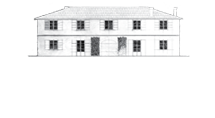LOCATION
Situated at 85/110 meters above sea level, it extends to the Montalbano area (one of the seven sub-areas of Chianti: Chianti Montalbano). The Frasconaia vineyards are on a typical hill of the area and they have a clayey silt soil and texture; they are the last strips of land of the Barco Reale Mediceo. Facing the South-East,they benefit from a particularly favourable climate because they are protected (North) by the Mediterrenan scrub which, along with turkey oaks, cluster pines and arbutus trees stop the the cold winds from the Apennines and, at the same time, keep the good influence from the Tyrrhenian Sea. This is how the particularly suitable natural condition for the cultivation of vineyards and olive groves is obtained. Biodynamic conditions such as terrace cultivation or cultivation in the direction of the slope also contribute to create a product which fully expresses and keeps a “Terroir” worthy of its name.

THE “CHIANTI DI MONTALBANO” AREA
The Montalbano area, between the provinces of Florence, Prato and Pistoia, has always meant wine production (Ancient Roman archaelogical finds, dating back to 50/60 b.c., prove it). Such an ancient tradition has helped create a natural context, throughout the years, in which the production activity has become more and more specific resulting in the creation of a specific “subgroup” of Chianti. Although it has all the main characteristics of Chianti (Sangiovese, Cannaiolo and Colorino), Chianti Montalbano is characterised by the presence (max 15%) of Cabernet Sauvignon grapes which give it a special ruby colour; Moreover, it has DOCG specifications dating back to 1997 (which sum up the 1932 specifications).

CULTIVATION
Since it was established, “Frasconaia” has kept the 5 hectars dedicated to the production, which once were typical of the “Tuscan sharecropping”: olive oil and wine. The structural, geographic and historic characteristics of the traditional and autochthonous Cannaiolo, Sangiovese, red-berry Colorino, Tuscan Trebbiano and white-berry Colombiana vineyards have been maintained and partially renewed according to the principles of the biodynamic method. In the past 5/7 years, helped by the agronomist Alessandro Marino Merlo, we have chosen to introduce more “refined” vineyards such as Cabernet Sauvignon and Syrac, which are normally used to produce red wines, and Vermentino, which is normally used for white wines.

 English
English Italiano
Italiano 